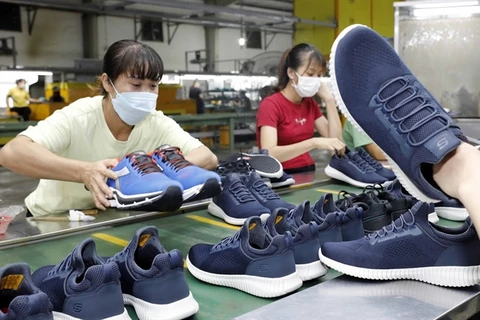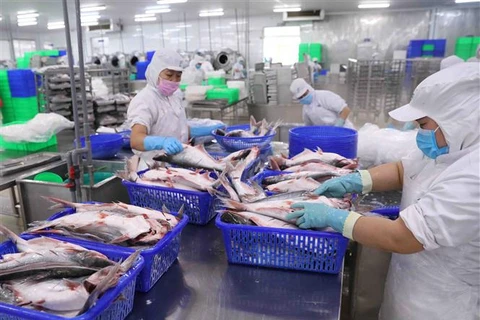 Promoting the application of cutting-edge technology in the field of garment and textile. (Photo: Duc Duy/Vietnam+)
Promoting the application of cutting-edge technology in the field of garment and textile. (Photo: Duc Duy/Vietnam+) Hanoi (VNA) - Competitive pressure and market fluctuations are among challenges any business has to face anytime, and apparel and footwear industries are not exemptions. However, in the difficult situation, many of them have found ways to advance, considering challenges as opportunities for further development.
Specifically, with lessons and experiences drawn from the reality, a number of enterprises in the industries have managed to climb to the top three globally, despite intense competition.
Even during the most challenging periods, many have found appropriate strategies to both uphold their brand integrity and sustain bigger market share.
Adaptation is key
In the first quarter of 2023, Garment 10 Corporation – a top garment-textile enterprise in Vietnam, saw a year-on-year decline of 10%.
According to Than Duc Viet, General Director of the company, early proactive measures helped ensure that the decline of orders was less severe than the industry’s average level.
In the current context, as consumers tighten their belts and reduce spending on non-essential goods, the corporation is focusing more on brand development to maintain its stability.
Highlighting Vietnam’s commitments at the UN Climate Change Conference in Glasgow (COP26) to reducing CO2 emissions, Viet said it is essential for the company to take action in response to the country’s commitments.
Otherwise, it risks becoming outdated, or customers may refuse to order if they do not meet green manufacturing criteria, he elaborated.
In 2022, over 100 customer reviews were conducted for the corporation’s factories and labour force. Therefore, if the company does not meet the standards set by customers, it would certainly not receive any export order, according to Viet.
The corporation is determined to be a green manufacturer, using green energy and fuels, as well as utilising products with green origins, such as organic products or recycled fiber, he said.
The next step is to use renewable or natural energy, gradually transitioning from coal-fired furnaces to biomass furnaces, and eventually to electric and gas-powered ones, he added.
Creating breakthroughs with technological revolution
For the textile and footwear industries, the Fourth Industrial Revolution (Industry 4.0) has provided significant momentum for businesses to create breakthroughs in enhancing labour productivity.
Currently, Garment 10 Corporation is capable of using software in designing products, approving the fit of products through software, and showcasing fashion on software.
These processes, which were previously done manually, can now be accurately performed with the help of software.
Only after achieving near-complete accuracy on the software does the company proceed to transform prototype products into actual ones.
This transition has drastically shortened numerous processes, saving time and reducing the cost of raw materials in product development.
Underlining some major orientations of the garment-textile industry, Phan Thi Thanh Xuan, General Secretary of the Vietnam Leather, Footwear and Handbag Association, said applying digitalization is one of the solutions to help improve management quality, reduce costs and enhance capacity for businesses./.























